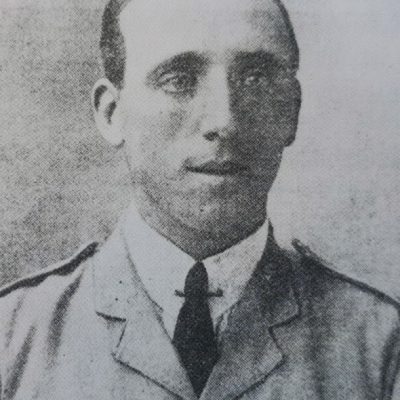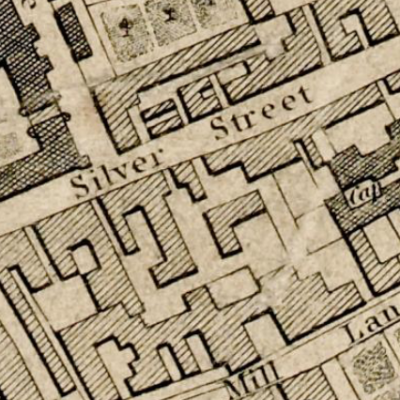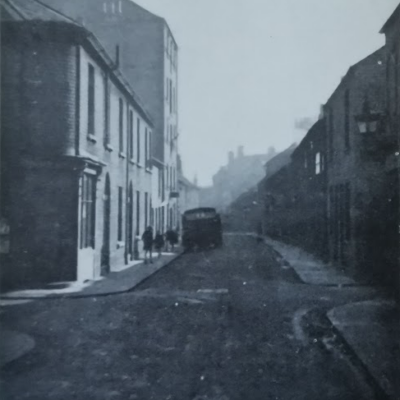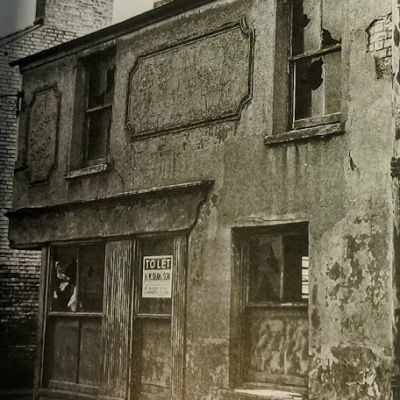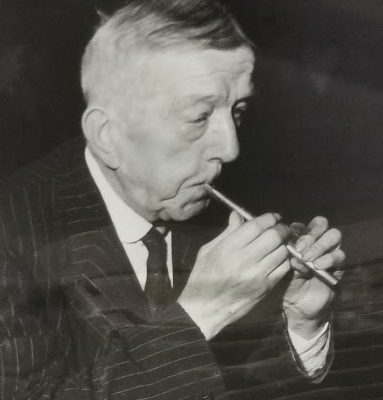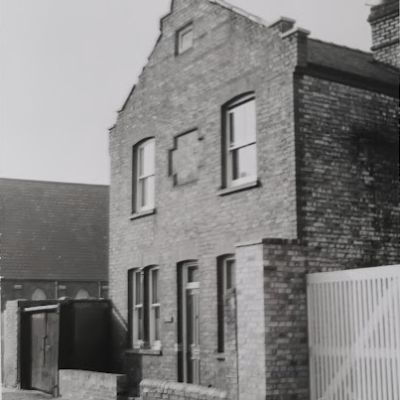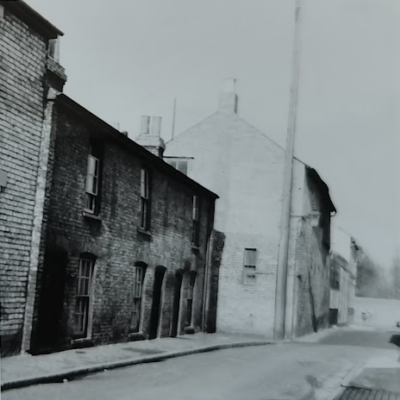Search by topic
- archaeology
- Building of Local Interest
- chapel
- charity
- church
- crime
- dressmaker
- fire
- Great Eastern Railway
- Listed building
- Mapping Relief
- medieval
- oral history
- poverty
- Public House
- Religious House
- Roman
- scholar
- school
- Then and Now
- tudor
- women
- work
- world war one
- world war two
Search by text
Wellington Street (Row)
History of Wellington Street
1851 Wellington Row
(28)
Caroline Beasly, 29, charwoman, b Cambridge
(29)
William Brunt, 32, dealer in earthernware, b Beds
Louisa, 23, b Lincs
William, 13, helps father, b Lincs
Joseph, 3, b Beds
Sarah Ball, mother in law, 63, traveller, b Lancs
Priscilla Ball, sister in law, 14, helps mother, b Lincs
Sarah Brunt, daughter, 1.5, b Swavesey
(30)
William Constable, 60, cordwainer, b Girton
Mary, 39, shoe binder, b Surrey
Thomas Badcock, lodger, 60, carpenter, b Cambs Cottingham [?]
Mary, 59, lodger, b Littleport
(31)
Thomas Mansfield, 27, tailor, b Fulbourn
Eliza, 30, b Barrington
William Payne, 17, tailor, b Clare
(32)
Ann Flack, widow, 60, formerly laundress, b Chesterton
Emma, niece, 26, dressmaker, b Chesterton
Harriet Marsh, visitor, 22, straw bonnet maker, b Cambridge
Harriet Flack, daughter, 1, b Cambridge
In 1852 Harriet Marsh was arrested by the proctors. Her committal number was 99.
(33)
Sarah Bridge, 30, dress maker, b Westley
Ann Ashbury, 28, shoe binder, b Haddenham
Frederick Hill, visitor, 33, hawker, b Cambridge
In 1850 Ann Ashbury was sent to the Spinning House
In 1861 Ann Ashbury is living at 18 Wellington Street
(34)
Harriet Skinner, widow, 55, ship keeper, b Berks
Sarah Baldwin, visitor, 74, bricklayer’s wife, b Cambridge
Richard Hipphell, lodger, 40, hatter, b Cambridge
Harriett Hipphell, 26, b Cambridge
Harriett Hipphell, 5, b Cambridge
(35)
John Hinson, 70, formerly tailor, b Elsworth
Jane, 35, ? Partoress?, b Cambridge
Susan Curtis,, visitor, 38, college servant, b Madingley
(36)
Henry Fuller, 39, baker, b Cambridge
Martha, 36, b Norfolk
(37)
William Day, 42, gardener, b Cambridge
Jemima, 36, b Cambridge
Jemima, 11, b Cambridge
John, 10, b Cambridge
Esther, 8, b Cambridge
James, 6, b Cambridge
George, 4, b Cambridge
Herbert, 1, b Cambridge
(Old School Yard)
Mary Wells, 46, charwoman, b Godmanchester
(Old School Yard)
William Barton, 39, bricklayer, b Cambridge
Esther, 26, b Cambridge
John, 9, b Cambridge
Henry, 4, b Cambridge
(Old School Yard)
Francis Elwood, 64, groom, b Longstanton
Eliza, 75, b Caldecote
(Linton Place)
Thomas Walls, 32, coal porter, b Cambridge
Susan, 35, b Cambridge
Sophia Pepper, sister in law, 16, b Cambridge
(Linton Place)
Thomas Savage, 39, porter, b Cambridge
Ann, 37, b Somersham
William, 7, b Cambridge
(42)
Harriet Hart, 23, b Cambridge
Robert Garwood, 24, b Norfolk
(43)
William Cowell, 49, cordwainer, b Herts
Elizabeth, 46, b Bartlow
Samuel, 20, shoemaker, b Essex
William S, 16, fishmonger lad, b Herts
Stephen N, 15, shoemaker, b Herts
Thomas, 13, shoemaker, b Herts
Sarah S, 12, b Cambridge
James, 8, b Cambridge
Elizabeth A, 5, b Cambridge
Jane, 2, b Cambridge
(44)
James Kettle, 51, green grocer, b Bottisham
Sarah, 46, b Barton
Sarah, 24, college waiter, b Cambridge
Frederick, 15, errand boy, b Cambridge
Emily, 8, b Cambridge
Adelaide, 6, b Cambridge
Sophia Allen, 24, visitor, b Cambridge
(45)
Thomas Stubbings, 30, labourer, b Cambridge
Hannah, 40, b Harston
Rebecca Rayner, niece, 14, b Harston
(Two Houses Uninhabited)
1861 Wellington Street/Row/Passage
(1)
(2)
(3 Row)
(4)
(5)
(6)
(7)
(8)
(9 Passage)
(10 Passage)
Passage
Passage
Passage
Passage
Passage
Passage
(9)
(10)
(11)
(12)
(13)
(14)
(15)
(17)
(Passage)
(Passage)
(Passage)
(Passage)
(Passage)
(Passage)
(18)
Ann Ashbury, 38, no occupation, b Ely
Thomas Carter, 25, labourer, b Chesterton
Mary Ann Coe, 24, boot binder, b Cambridge
In 1851 Ann was living at 33 Wellington Row
(19)
(20)
(21)
(22)
(23)
(Back of Houses)
(Street)
(Street)
(24)
(25)
(26)
(27)
(28)
(29)
(30)
(31)
(32)
(33)
(35)
(34)
(36) Home Mission House
(37)
(38)
(39)
(40)
(41)
(42)
William Cowell, 59, shoemaker, b Herts
Elizabeth, 54, shoe binder, b Bartlow
James, 18, shoemaker, b Cambridge
Elizabeth Amelia, 15, b Cambridge
In 1871 Elizabeth Amelia was at 41 Gold Street
(43)
(44)
(45)
1871
(1)
(2)
(3)
Robert Spence, 46, shoemaker, b Cambridge
Maria, 26, wife, shoe closer, b Northants
CCJ 24.9.1870:
Maria Spence, 25, of Wellington Street, a married woman, was charged with stabbing in the thigh with a knife, William Swainland, shoemaker, of Sturton-street.—Prosecutor said that about an hour after midnight on Saturday, he was going home; prisoner came behind, called to him, and he stopped. She got hold of his collar, and said You b_ , I’ll kill you. (Knew prisoner before). She then got a knife out of her pocket and stabbed him in the groin. Had seen the prisoner before that evening in Wellington-street, but had not been in her company. She then slapped him by the side of the head and told him to go home; after that she ran into her house. Had given prisoner no provocation.— Prisoner: What made you kick at my door? – Because you hit me on the head.— Prisoner: I never stabbed him and never had a knife.— Prosecutor: I felt the knife and have got marks as the result of it. Blood flowed from the wound which was not very serious. Have not been examined by a doctor. When the woman stabbed me, I got her down and held her until the policeman came – Prisoner: Yes and didn’t you say you would let me go if I would let you go home with me. That’s what it was all about. Prosecutor (sotto voce). I never went home with you in my life.—Examination continued. Prisoner called out for police, and when an officer came up I gave her in charge.—P.c. George Clark proved finding prosecutor with prisoner on the ground in Gwydir-street. He took her into custody on prosecutor’s representation. Saw prosecutors trousers, which bore two marks—one appeared to have been made by a stab and the other cut. There was little blood on the trousers. When arrested, prisoner said to Swainland: “You b_ , I have stabbed you with nothing only a hair-pin. _you, I will do for you before you are a month older.” The officer took possession of the trousers on Sunday, but prosecutor showed him the wound at the station. It looked like a stab from the knife, about a quarter-inch in width, and a little protruding. After he had taken prisoner to the station, P.c. Clark returned to where he found the parties Gwydir-street, and found the pen-knife (produced) lying on the ground near to where prisoner’s head lay. It was then shut up, but there was blood on it. Found hair-pin on the ground, likewise, but had not produced it —Swainland recalled: The trousers produced, are mine. They were not cut before Saturday night. Was stabbed once, and on prisoner coming again, I caught hold of her arm and prevented her but in her attempt she cut my trousers—The Mayor said he should like to hear the evidence of a surgeon before concluding the case; and the prisoner was accordingly remanded till the following day.
The Gwydir Street Stabbing Case:
Maria Spence, of Wellington-street was brought up on remand charged with stabbing William Swainland, at midnight on Saturday.—Dr Ransom now attended, and said he examined Swainland on Monday afternoon. He found a punctured wound in the upper part of the left in size somewhat more than the eighth of an inch. There was a clot of hardened blood on it, but he found inflammation or indications of mischief about it. The wound was closed and he did not probe it to ascertain the depth. It was impossible that it could have been caused by a hair-pin, but it might have been done by the pen-knife produced. The upper cut in the trousers would about agree with the position of the wound on the thigh. _ Prisoner said the young man frequently came and kicked her door, and on Saturday night she ran after him and caught him at the bottom of Norfolk-street.—Prisoner, who denied having a knife in her hand, was then committed for trial at the assizes. Substantial bail with certain notice, would he accepted if forthcoming.
(4)
(5)
(6)
(7)
(8)
(9)
(10)
(11)
(12)
(13)
(14)
(15)
(16 & 17)
(18)
(19)
(20)
(21)
(22 & 23)
(23)
(24)
(25)
(26)
(27)
(28)
(29)
(30)
(31)
(32)
(33)
(35)
(34)
(35)
(36)
(37A)
(38A)
(37)
(38)
(39)
(40)
(41)
(42)
William Cowell, 69, shoemaker, b Herts
Elizabeth, 64, b Bartlow
In 1881 Elizabeth was a widow living at 11 Broad Street
(43)
William Flack, 42, under bailiff county courts, b Cambridge
Mary A, 40, b Norfolk
Ernest Ferguson, nurse child, 4, b Cambridge
For Mary’s involvement in death of baby in Lensfield Brook 1872
(44)
(45)
Contribute
Do you have any information about the people or places in this article? If so, then please let us know using the Contact page or by emailing capturingcambridge@
License
This work is licensed under CC BY-NC-SA 4.0





